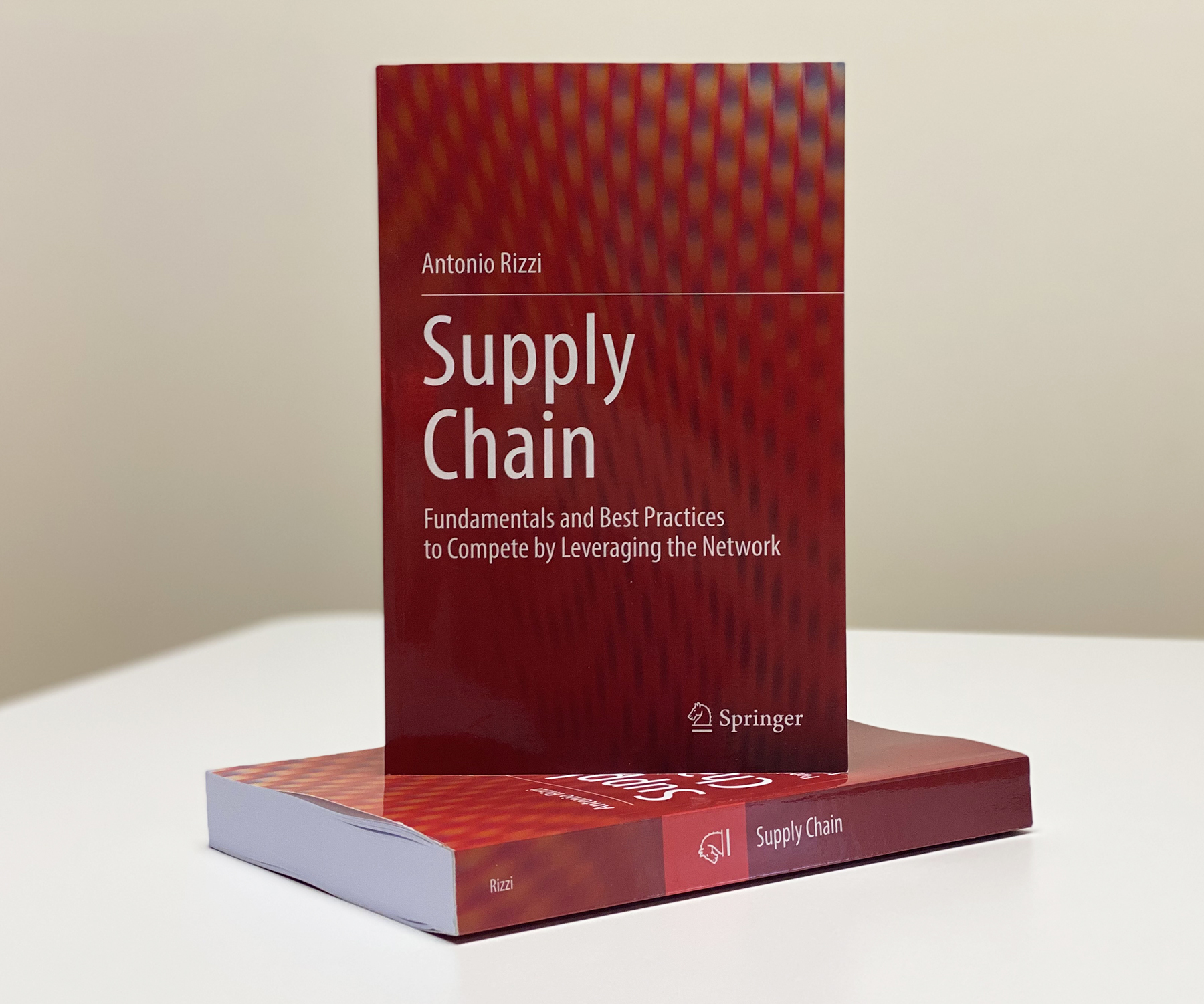In this new book, addressing university students as well as industry operators, Prof. Antonio Rizzi combines 20+ years of academic research with consultancy experiences in the fields of supply chain management, industrial logistics distribution and retail.
By thoroughly analysing the concept and evolution of supply chain, the book sets out to define and describe its fundamentals and best practices while also exploring and discussing its future composition and potentials.
“We have entered a period of great change, a period which is going to substantially change not only the supply chain and therefore the way we produce, distribute and consume goods and services, but the whole of society”, writes Rizzi stressing how important it is to fully understand what we are living through, how scenarios are changing, and what the future supply chain will look like.
The book examines the supply chain from different perspectives:
- the physical structure which it is composed of (actors, roles, infrastructures and processes),
- the organizational structure of the people involved (business functions and related interactions and integrations),
- and the manifold flows that characterize it (product flows, information flows, service flows and monetary flows).
For each of these dimensions, the text thoroughly illustrates how to design and manage it, aligning supply chain performance and competitive strategies through an integrated approach, which is key to generate competitive advantage.
For university students and industry operators
The book covers the different topics by combining a quantitative approach typical of engineering disciplines and adopted particularly in the operational parts, with a qualitative approach which fits in the more strategic parts. This combination makes the volume suitable for both under- and post-graduate students in industrial engineering and management, as well as undergraduates or masters students confronting supply chain management from different cultural backgrounds.
Industry operators and practitioners can also find useful insights, since it thoroughly describes industry best practices, especially in the food and consumer goods, fashion and apparel, pharmaceutical and healthcare sectors, stemming from author’s real life experiences in these fields.
Contents in short
- Chap. 1 is an introduction to the book, since it defines the supply chain, its process and its players.
- Chap 2 describes the supply chain through the players involved in it. A particular focus is paid to the distribution and retail structure and delves deeply into how players like Amazon or Dell have been able to leverage and innovate the supply chain to generate a competitive advantage.
- Chap 3 begins from Porter’s Value Chain, the different business functions involved ant their roles and conflicts. How the various functions involved in the supply chain process must be orchestrated by the supply chain manager is also addressed.
- Chap 4 deals with the information flows exchanged by the players in the supply chain, which make it possible to govern the physical flows of products and the related services.
- Chap. 5 describes the supply chain from a final perspective: the service flows that stem from the supply chain process.


